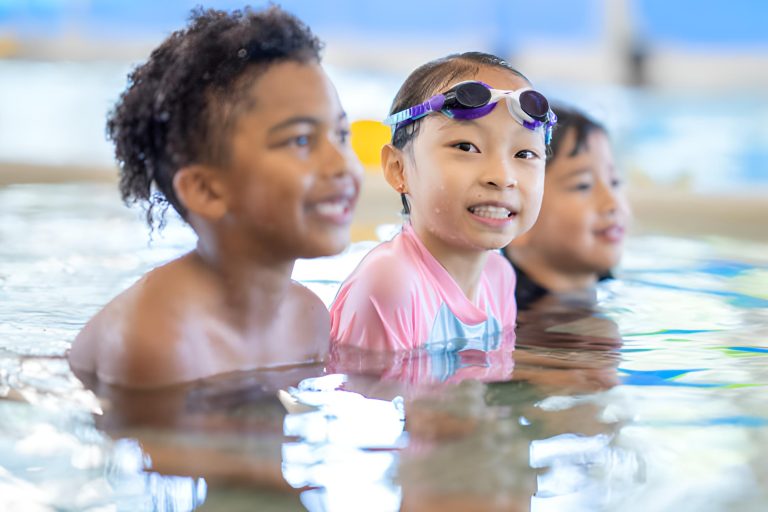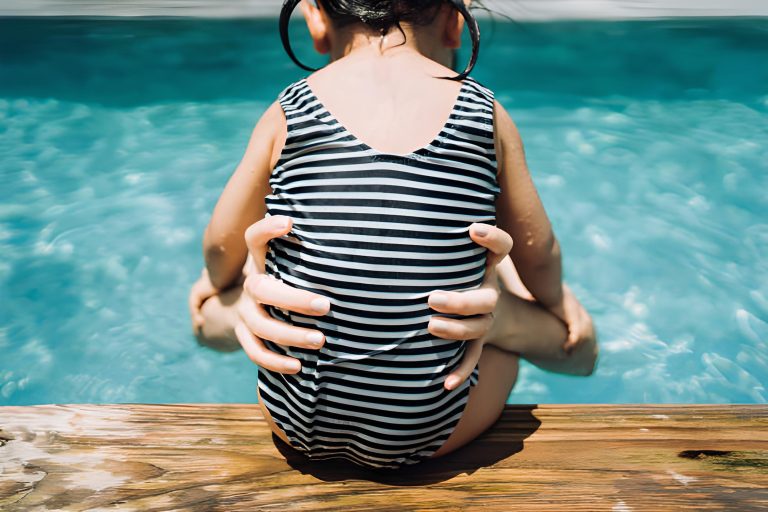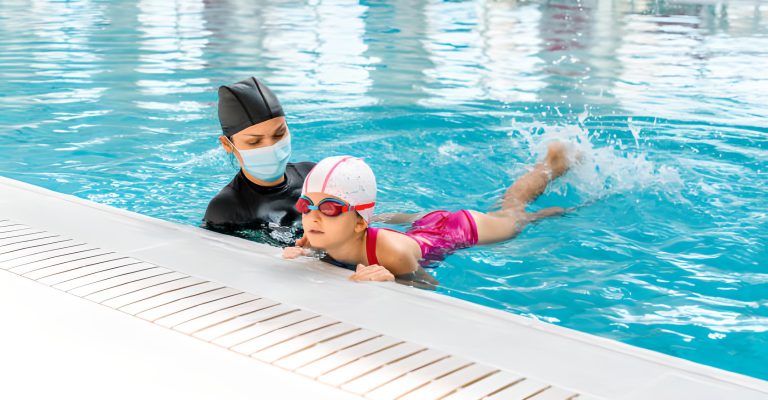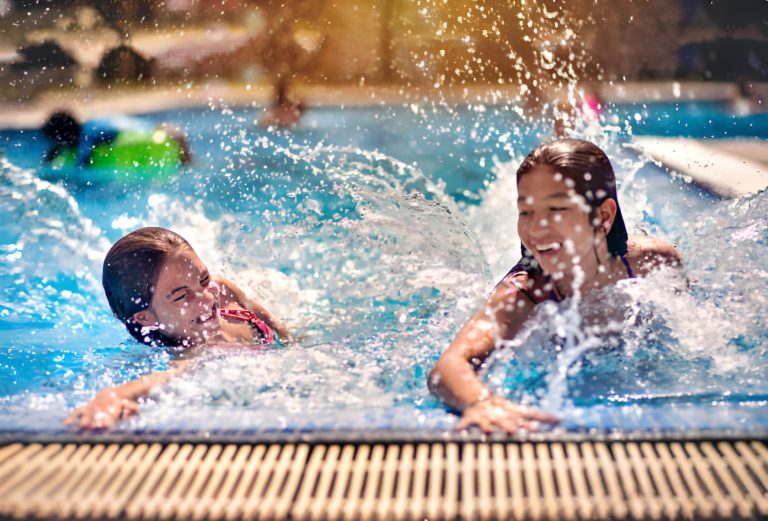Children's Swimming Lessons: 6 Tips for Getting the Most Out of Them

Swimming is a valuable life skill that can provide children with a sense of accomplishment, improve their physical health, and increase their safety around water. If you’re considering enrolling your child in swimming lessons, here are six tips to help them get the most out of the experience:
Start early
Children as young as six months old can begin learning basic water safety skills. The earlier you start, the more comfortable your child will be in the water and the easier it will be for them to learn proper technique. According to the American Academy of Pediatrics, children who start swimming at a young age are less likely to develop a fear of water and are more likely to become proficient swimmers. This is because the younger brain is more receptive to learning new skills and adapting to new environments. Starting early also gives your child a head start in learning a skill that can provide a lifetime of enjoyment and physical activity.

Swimming can provide numerous physical and mental benefits for children. It helps to improve their coordination, balance, and muscle strength, and can also contribute to the development of their cognitive skills and social skills. Swimming can also provide an excellent cardiovascular workout and can help to improve your child’s overall physical health and fitness.
When starting your child in swimming lessons, it’s important to choose a program that is age-appropriate and tailored to their individual needs and abilities. Many swim schools offer classes for infants and toddlers that focus on basic water safety skills, such as blowing bubbles, submerging their face in the water, and floating on their back. These classes often use games and toys to make the lessons fun and engaging for young children. As your child gets older and becomes more comfortable in the water, they can progress to more advanced classes that focus on stroke development and other swimming techniques.
By starting early and choosing a program that is right for your child, you can help them develop a strong foundation of water safety skills and a love of swimming that will last a lifetime.
Choose a qualified instructor
Look for an instructor who is certified through a reputable organization such as the American Red Cross or the YMCA. This ensures that your child is receiving quality instruction from someone who has been trained in child development and water safety. It’s important to find an instructor who has experience working with children and is able to create a positive and supportive learning environment. You should also consider the instructor’s teaching style and whether it aligns with your child’s learning needs and personality.

A qualified instructor will have the knowledge and skills to teach your child proper swimming technique and water safety skills. They will also be able to adapt their teaching style to meet your child’s individual needs and learning style. For example, if your child is shy or anxious in the water, the instructor should be able to provide a gentle and supportive approach to help them feel more comfortable. On the other hand, if your child is more outgoing and energetic, the instructor should be able to keep them engaged and motivated to learn.
When choosing an instructor, it’s also a good idea to consider the instructor-to-student ratio. A lower ratio, such as one instructor to four students, can provide more individualized attention and support for your child. This can be especially beneficial for children who are just starting out in swimming lessons or who may be struggling to learn a particular skill.
Overall, choosing a qualified instructor is crucial for ensuring that your child receives quality instruction and has a positive experience in their swimming lessons. By doing your research and selecting an instructor who is right for your child, you can help set them up for success in the water.
Make it fun
Children learn best when they are having fun, so try to find a program that incorporates games and activities into the lessons. This will keep your child engaged and motivated to learn. Look for a program that uses toys, music, and other playful elements to make the lessons enjoyable for your child. You can also encourage your child to bring their favorite pool toys or games to the lessons to make them more enjoyable.

Making swimming lessons fun can also help to reduce anxiety and fear in children who may be hesitant to enter the water. By providing a positive and supportive learning environment, you can help your child feel more at ease and encourage them to try new things.
There are many ways to make swimming lessons fun for children. Some programs may use games and challenges to teach new skills, such as throwing a ball back and forth or playing follow-the-leader. Other programs may use music and rhythm to help children learn new strokes or techniques. You can also try incorporating elements of play into your child’s lessons by pretending to be different animals or playing pretend games in the water.
Overall, the key is to find a program that uses a variety of engaging and interactive techniques to keep your child interested and motivated to learn. By making swimming lessons fun, you can help your child develop a love of the water and a lifetime of enjoyment in the pool.
Practice at home

Encourage your child to practice what they have learned in their lessons at home. This can be as simple as blowing bubbles in the bathtub or practicing floating on their back. You can also create your own mini-lessons at home by setting up a small pool or filling a plastic pool in the backyard. This will give your child the opportunity to practice their skills in a familiar environment and will help reinforce what they have learned in their lessons.
Practicing at home can also help to build your child’s confidence and independence in the water. As they become more comfortable and proficient in their swimming skills, they may be more likely to try new things and explore the water on their own.
There are many ways to incorporate practice into your child’s daily routine. You can set aside a few minutes each day for your child to practice their skills in the bathtub or pool. You can also encourage your child to play water games and activities that involve swimming, such as Marco Polo or Shark Attack. By making practice a regular part of your child’s routine, you can help them build their skills and confidence in the water.
Overall, practicing at home can be a valuable supplement to your child’s swimming lessons and can help to accelerate their learning and development. By encouraging your child to practice regularly, you can help them become more proficient swimmers and more comfortable in the water.
Get involved
As a parent, you can support your child’s learning by being involved in their lessons. Observe their progress and ask the instructor for feedback. You can also practice what your child has learned with them at home. By getting involved, you can help your child feel supported and encourage them to continue learning.
There are many ways you can get involved in your child’s swimming lessons. You can attend the lessons with your child and watch from the sidelines to see their progress. This can be a great opportunity to bond with your child and show your support for their learning. You can also ask the instructor for feedback on your child’s progress and areas for improvement.
Another way to get involved is to practice with your child at home. You can set up a small pool or fill a plastic pool in the backyard and work on basic skills such as blowing bubbles or floating on their back. You can also play water games or activities that involve swimming, such as Shark Attack or Marco Polo. By practicing together, you can help your child feel more confident and encourage them to try new things in the water.
Overall, getting involved in your child’s swimming lessons can be a great way to support their learning and encourage their progress. By showing your interest and enthusiasm, you can help your child develop a love of swimming and a lifetime of enjoyment in the water.
Set goals
Setting goals can help your child stay motivated and track their progress. You can work with your child’s instructor to set short-term and long-term goals, such as learning a specific stroke or becoming a more confident swimmer. Encourage your child to work towards these goals and celebrate their achievements along the way.

Setting goals can provide a sense of purpose and direction for your child’s swimming lessons. It gives them something to work towards and helps them see the progress they are making. By setting specific and achievable goals, you can help your child stay motivated and engaged in their lessons.
There are many types of goals you can set for your child’s swimming lessons. Some examples might include learning a specific stroke, such as the freestyle or backstroke, or becoming more comfortable in the water. You might also set goals around improving your child’s endurance or stamina in the water, or developing their overall swimming technique.
It’s important to make sure that the goals you set for your child are realistic and achievable. You should also be sure to celebrate your child’s achievements along the way. This could involve praising their progress, giving them a small reward, or simply showing them your support and encouragement.
Overall, setting goals can be a powerful tool to help your child stay motivated and engaged in their swimming lessons. By setting specific and achievable goals and celebrating their achievements, you can help your child feel a sense of accomplishment and pride in their swimming skills.
Swimming lessons can provide children with a variety of physical, mental, and social benefits. By following these tips, you can help your child get the most out of their lessons and develop a lifelong love of swimming.